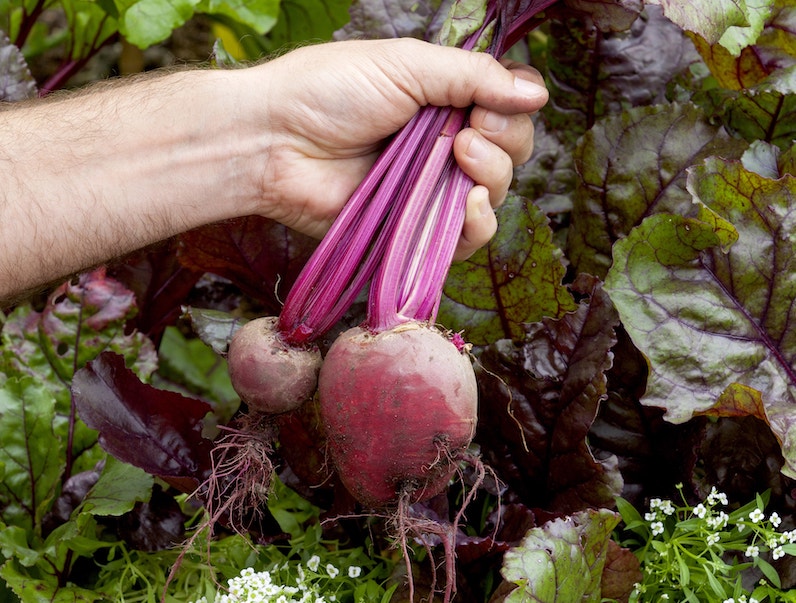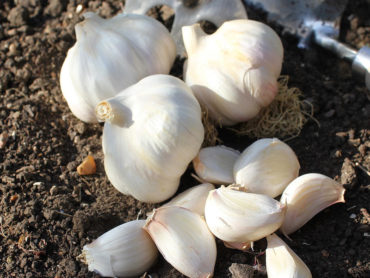Beetroot is easy to grow from seed, doesn’t take up lots of space and matures quickly, making it a great catch-crop or gap-filler. You can even grow beetroot in large containers or window boxes. We asked experienced allotment grower Lee Senior for his advice on growing beetroot at home. Here are his top tips.
Want to give it a go? Browse our full range of beetroot seeds.
How to choose the best beetroot variety to grow
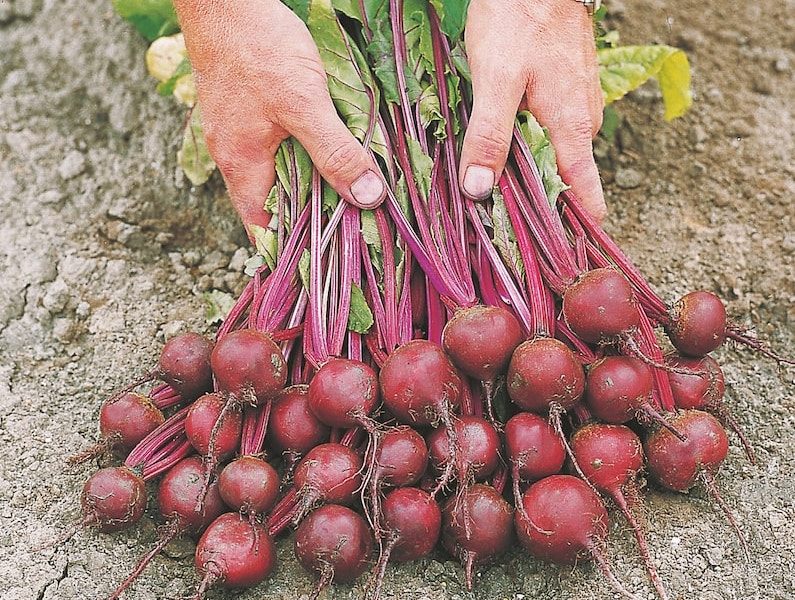
Image: Beetroot F1 ‘Action’ from Suttons
The F1 variety Beetroot ‘Action’ is my favourite variety for container growing. The lovely sweet-tasting beets are best harvested when small, roughly the size of a golf ball. They can be ready to eat in as little as 10-12 weeks, and I sow seeds every three to four weeks to ensure a continual supply throughout the summer.
One of the best early varieties is Beetroot ‘Boltardy’. In favourable conditions and mild spring weather, the seed of this timeless variety can be sown in regular intervals from late March or early April through until mid-July. It’s somewhat resistant to bolting from early sowings, and has a very fine flavour.
A packet of Beetroot ‘Rainbow Mix’ seeds never fails to disappoint, and is understandably popular with children too. As with most varieties, the beets are best harvested small. The star of the show is the flesh, which comes in a superb range of eye-catching colours including yellow, white and of course red!
For something totally different, the Italian variety ‘Chioggia’ certainly comes up trumps. This variety reveals strikingly distinctive white rings in the flesh when cut open. You can also harvest the young leaves to use in salads or cook like chard. For anyone new to beetroot-growing, this is sure to be a talking point among your allotment neighbours!
How to direct sow beetroot seeds outdoors

Image: Beetroot F1 ‘Bolder’ from Suttons
Beetroot can be sown directly outside as soon as the soil temperature is sufficiently warm. This is my preferred way to sow the seed as it avoids root disturbance. In a mild spring, early varieties such as ‘Boltardy’ can be sown in prepared soil as early as April. Here’s how I do it:
- Pre-warm your soil in March using black sheeting or using a hot bed system.
- Sow beetroot seed thinly at a depth of up to 3cm (almost 1 inch) into soil that has been weeded and worked into a fine tilth.
- I like to line the bottom of the seed drill with proprietary multi-purpose compost, which I feel gives better germination.
- Pre-water the seed drill during dry weather.
- Cover the seeds lightly with more compost or very fine garden soil.
- Protect the seeds with fleece or a cloche after sowing.
- The seed can also be sown in raised beds in rows or blocks.
- Germination takes 2-3 weeks depending on the conditions.
- It’s important not to let the seed drills dry out or this will reduce germination success.
How to care for beetroot
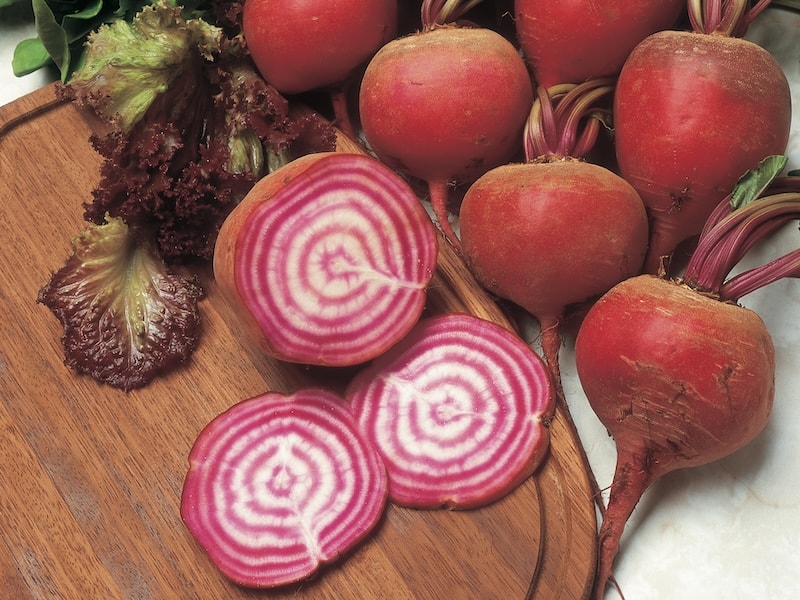
Image: Beetroot ‘Chioggia’ from Suttons (©Thompson & Morgan)
Once your seedlings are all growing, thin them out to roughly 8-10cm (3-4 inches) apart. Larger spacings will allow for bigger roots, but again, it’s important to remember that smaller roots have more flavour.
Over the years I’ve taken the time to carefully transplant individual beetroot thinnings and they have gone on to develop into successful plants, but this can be fiddly. Choosing damp cool conditions for transplanting is essential, as is not letting the plants dry out for a few weeks afterwards.
To successfully grow young beetroot plants, choose a sunny location and try to keep the soil weed free. Water well during dry spells. You’ll get much better quality roots which have less chance of splitting if you keep the soil moist. Beetroots are not really big feeders so ordinary garden soil, in good condition, should suffice.
How to start beetroot seeds indoors

Image: Super 7 Electric Windowsill Propagator from Suttons
Beetroot seeds can be started off on a windowsill or heated propagator during late winter when the soil is still too cold for germination outdoors. I use modular seed trays rather than standard seed trays to start beetroot off indoors.
Once the seeds have germinated they can be grown on for several weeks in a cold greenhouse or cold frame. Thin out the weakest seedlings and allow the others to grow on. The seedlings can be planted out under cloches or fleece at the end of April or early May, but don’t forget to harden them off first.
How to plant beetroot plug plants

Image: Beetroot ‘Rainbow Mixed’ from Suttons (©Floramedia)
Plug plants offer a great, fast-track way to get your beetroot plants in the ground. The key task when planting out is not to damage the roots of the young plants. Keep the young plants moist once you’ve transplanted them, and grow them on in the normal way.
Some allotment holders grow their plants in small clusters to harvest as mini beets, and use the foliage in salads too.
How to harvest and store beetroot
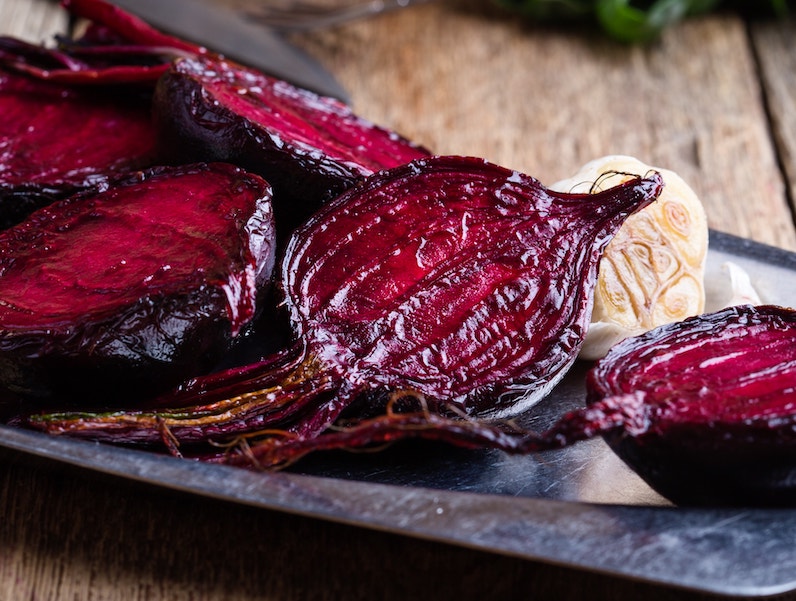
Image: Beetroot Jolie from Suttons
When harvesting beetroot it’s important to twist rather than cut the foliage. Twisting will stop the broken stems from bleeding sap. I always harvest the roots when they reach the size of a golf ball, as this is when they’re at their most tender. If they’re allowed to get much larger they can become woody and increasingly unpalatable.
There are a number of different ways to store good quality, undamaged roots over winter. If your soil is well-drained or you’re growing in a raised bed, they will store in situ once the foliage has been twisted off, provided there’s no frost.
They will also survive the winter stored in boxes of damp compost or sand in a cool dry location such as a garage, outbuilding or cellar.
With a bit of care, it’s quite possible to have a supply of tasty beets right through until the end of February. If you start sowing your seeds in late winter, this will allow you to be self-sufficient in beetroot for 8 or 9 months of the year.
We hope we’ve inspired you to try growing new and exciting beetroot varieties that you can’t buy in a supermarket. Find more of Lee’s practical, hands-on, vegetable growing advice over at his monthly allotment pages.
Lead image: Beetroot ‘Bulls Blood’ seeds from Suttons (©Thompson & Morgan)
Last Updated on December 11, 2024 by Suttons Horticultural Team

